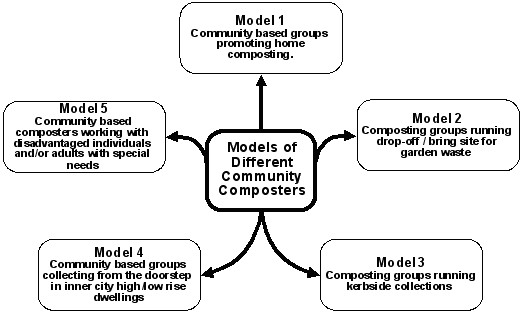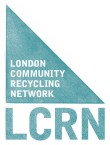What is Community Composting?
 In some ways the title says it all. Community Composting is about composting in the community! What the title doesn't reveal is that in the UK, the range of Community Composting projects is remarkable.
In some ways the title says it all. Community Composting is about composting in the community! What the title doesn't reveal is that in the UK, the range of Community Composting projects is remarkable.
Community Composting schemes range from relatively small neighbourhood projects to schemes which cover large districts. Whatever the size and scale of the project, Community Composting is essentially about groups of like-minded people who want to ensure that a potential precious resource ends up as just that, rather than being sent to landfill. For details about the extent and diversity of Community Composting activity in the UK, see the comprehensive survey that was carried out as part of this project.
The glue that holds Community Compost schemes together and indeed created them in the first place is a rich and diverse body of individuals who have come together to make things happen. In many neighbourhoods, green waste might be seen as a problem. For community composters it represents a big opportunity to make good things happen.
So what does it look like in practice? Play the video below to see a Community Compost scheme in action - Rotters in South Liverpool.
What do we mean by 'Community Composting'?
The community composting sector is made up of a diverse range of groups running a wide variety of composting projects. Given this diversity it would be inappropriate and misleading to try and determine a ‘one size fits all’ definition. We wanted to provide as complete a picture as possible of the groups and activities that come under the umbrella of Community Composting. The meaning of Community Composting we used in this project contains the following characteristics:- Includes groups involved in a range of composting and composting related activities, including one or more of the following: collecting and composting material; educational campaigns; promoting home composting and facilitating others to carry out composting;
- Includes a range of groups/organisations from informal collectives of individuals, small grant/charitable funded organisations, organisations relying on grants and tradable income, through to larger scale self-funded entities. These will include third sector organisations that fall under the community and volunteers categories as well as organisations that fit with models of social enterprise.
- Carrying out and promoting composting might be a group's main activity, or it might complement additional resource management activity (such as waste minimisation or re-use) or broader sustainability and community support activity;
- Includes groups with a mix of environmental and social objectives.

What is Compost?
Compost is "...biologically processed, stabilised and sanitised (waste) organic matter with beneficial properties for plants and soil.A complex mix of organic matter (particularly decomposed plant cell wall constituents, cellulose and lignin and humus), microorganisms (alive, dead, and decomposed) and minerals (nitrogen, phosphorus, potassium and others in lesser quantities) with unique biological, chemical, and physical properties."
- Definitions from The Community Composting Guide, 2003, Green Books Ltd
Next: Why Community Composting?
Printed from: www.valuingcommunitycomposting.org.uk
This website was developed as one of the deliverables for the Defra funded Open University research project, WR0211: Unlocking the Potential of Community Composting. Information contained in it is correct at the time of publication. © The Open University, January 2009




Essential web links if you are running or thinking of running a Community Composting project:
The Growing with Compost ToolkitHome and Community Composting on the NRWF Household Waste Prevention Toolkit
Community Composting Network
Devon Community Composting Network
Community Recycling Network
London Community Recycling Network
Cylch
Community Recycling Network Scotland